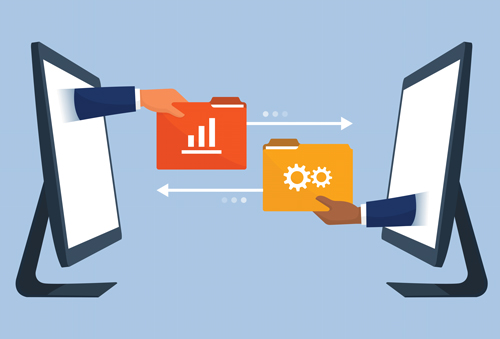The Future of Network Transformation: Trends and Predictions for the Next Decade

Introduction
Network transformation has emerged as a critical element in the digital strategy of organizations across various industries, driven by the need to accommodate rapid technological advances and shifting market demands. Over the past decade, we have witnessed significant strides in how data is processed, stored, and transmitted, leading to more efficient, secure, and robust network infrastructures.
As businesses continue to integrate cloud computing, IoT, and big data analytics into their operations, the role of network and digital transformation, becomes increasingly pivotal in ensuring these technologies operate seamlessly and effectively.
Looking forward, the pace of innovation and network modernization is only set to accelerate, bringing forth new challenges and opportunities in network design and management. This article aims to explore the emerging trends and technologies that will shape the landscape of networked systems in the next decade, offering expert insights and predictions on the evolution of network transformation.
The Rise of the NBN, 5G and Beyond

The ongoing rollout of NBN fibre and 5G technology mark a significant milestone in the evolution of network infrastructures, heralding a new era of ultra-fast and reliable internet service that will further catalyse network transformation across industries. 5G networks offer drastically improved speeds and lower latency compared to their 4G predecessors, enabling not only enhanced mobile broadband experiences but also making feasible high-demand applications such as real-time remote control, augmented reality, and widespread IoT connectivity. Similarly the massive investment that the country is making in the NBN fibre rollout significantly changes the capability and cost assumptions of fixed line network deployments.
This capability is set to revolutionize sectors from telecommunications to healthcare, where immediate data transmission is crucial. Looking beyond 5G, the future promises even more advanced network technologies that will continue pushing the boundaries of what is possible.
Technologies like 6G are already on the horizon, with predictions of even faster speeds and more reliable connections that could introduce capabilities we are only beginning to imagine, such as advanced holographic projections and access to even more sophisticated IoT ecosystems. These advancements will necessitate continuous innovation in network transformation strategies to fully leverage the potential of these high-speed networks.
Artificial Intelligence and Machine Learning in Networks

Artificial Intelligence (AI) and Machine Learning (ML) are rapidly becoming integral to network transformation, offering unprecedented efficiencies in network management and operations. AI and ML technologies empower networks with the capability to analyse vast amounts of data, make decisions, and predict network behaviours without human intervention.
This autonomy is particularly vital for optimizing traffic flow, managing resources, and enhancing service quality in real time. For instance, AI-driven algorithms can dynamically allocate bandwidth during peak usage times or quickly isolate and mitigate cyber threats before they cause significant damage.
Moreover, as networks grow more complex and essential to business operations, the need for automated and intelligent systems becomes even more pronounced. ML models that learn from network performance data can predict and prevent failures, ensuring higher reliability and availability.
This proactive approach to network management not only reduces downtime and operational costs but also helps in maintaining a consistent and secure user experience, which is crucial as businesses increasingly depend on digital platforms to operate and engage with clients.
Increasing Role of Edge Computing

Edge computing is set to play a crucial role in the future of network transformation, especially as the number of connected devices continues to skyrocket and the demand for real-time data processing grows.
By processing data closer to the source rather than relying on centralized data centres, edge computing significantly reduces latency and bandwidth use, facilitating quicker responses and enhanced performance for applications requiring immediate data analysis.
This shift is vital for emerging technologies, such as autonomous vehicles, industrial IoT, and smart city infrastructures, where milliseconds can determine the efficiency of operations.
Furthermore, edge computing not only enhances performance but also improves data management security. By localizing data processing, sensitive information can be handled in a more controlled environment, minimizing exposure to broad network vulnerabilities. This aspect is increasingly important as businesses face growing concerns over data privacy and security breaches.
As edge computing develops, it will become a foundational component in building resilient and efficient networks that are better suited to the demands of modern digital ecosystems, enabling both providers and businesses to leverage the full potential of IoT and other real-time data applications.
Cybersecurity in an Evolving Network Landscape

As network infrastructures become increasingly complex and integral to business operations, the importance of robust cybersecurity measures grows exponentially. The evolution of network technologies not only opens new avenues for efficiency and connectivity but also presents broader vectors for cyber-attacks. This dynamic environment requires adaptive security strategies that can swiftly respond to threats as they emerge.
Advanced cybersecurity technologies, including AI-driven threat detection and blockchain for secure, tamper-proof transactions, are becoming essential components of modern networks. These tools provide proactive security measures, identifying and neutralizing threats before they can exploit network vulnerabilities.
Moreover, as businesses continue to adopt cloud services and IoT technologies, the perimeter of network security expands beyond traditional boundaries. This shift necessitates a comprehensive approach to security that encompasses not just corporate networks but also remote endpoints and cloud-based assets.
Continuous monitoring, real-time threat analysis, and integrated security protocols across all platforms and devices are critical to protecting data integrity and maintaining trust in enterprises' digital systems. Investing in cutting-edge cybersecurity solutions and practices is no longer optional but a critical imperative to safeguard the assets and reputation of businesses in today's digital landscape.
Conclusion and Future Outlook

As we conclude our exploration of the future trends and technologies shaping network transformation, it’s clear that the landscape of networked systems is undergoing rapid and profound changes.
Technologies like 5G, AI, edge computing, and enhanced cybersecurity measures are not just trends but necessities that will define the operational capabilities of future networks. These advancements promise not only to enhance the speed and efficiency of network services but also to offer unprecedented levels of reliability and security, critical for the increasing reliance on digital infrastructure across all sectors.
Furthermore, the integration of these technologies into existing networks is not without its challenges, including the need for substantial investment and continuous innovation. Businesses must stay agile, adapting and continually evolving their strategies to leverage these technologies effectively. This adaptation will require a commitment to ongoing learning and development, as well as a willingness to rethink traditional network architectures in favour of more flexible and resilient solutions.
Looking forward, the pace of change in network technology will continue to accelerate, driven by further advancements in AI and machine learning, the expanding scope of IoT applications, and the continual push towards more integrated and secure data flows. The ability of businesses to anticipate and respond to these changes in managing networks, will be a significant determinant of their success in an increasingly connected world.
In sum, the future of network transformation is bright but demands vigilance and proactive adaptation. For businesses, the path forward involves not only embracing new networking technologies but also fostering a culture that prioritizes resilience, security, and forward-thinking planning. By doing so, they can harness the full potential of network transformation to drive growth and innovation in the coming decade.
Embrace the future of network technology by partnering with experts. Visit Beyond Technology today to explore how deliberate planning, innovative solutions and partners can transform your network infrastructure, ensuring you stay ahead in the rapidly evolving digital landscape.



